Fargo, ND Pollen and Allergy Report for Summer 2023
Pollen Allergy Trends in Fargo, ND
When is pollen lowest in Fargo, ND?

February
Lowest month total PPM
Avg. PPM
When is pollen highest in Fargo, ND?

April
Highest month total PPM
Avg. PPM
How does pollen in Fargo, ND compare to North Dakota?
Fargo has a higher average PPM than the state of North Dakota.
Fargo yearly avg PPM:
North Dakota yearly avg PPM:
How does pollen in Fargo, ND compare to the USA?
Fargo has a higher average PPM than the USA.
Fargo yearly avg PPM:
USA yearly avg PPM:
Is pollen worse this year in Fargo, ND?
Spring 2023 was worse than spring 2022.
Spring 2023 PPM:
Spring 2022 PPM:
Average PPM in Fargo, ND
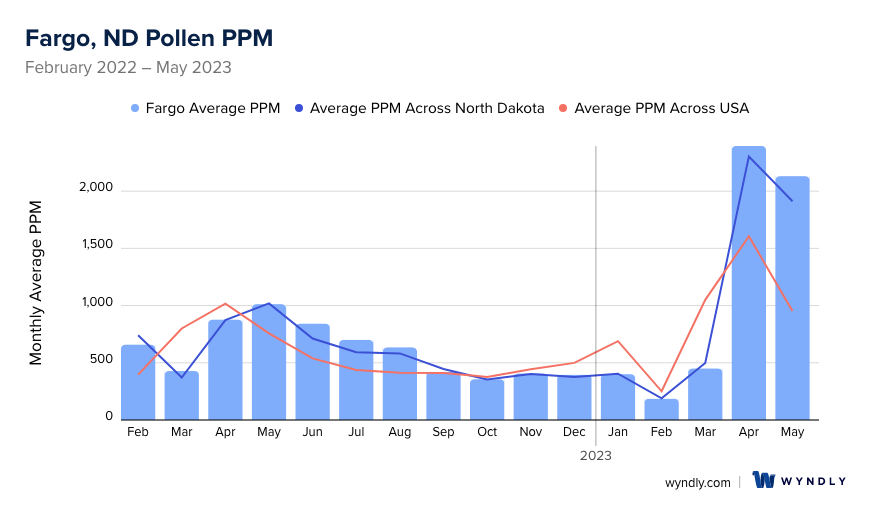
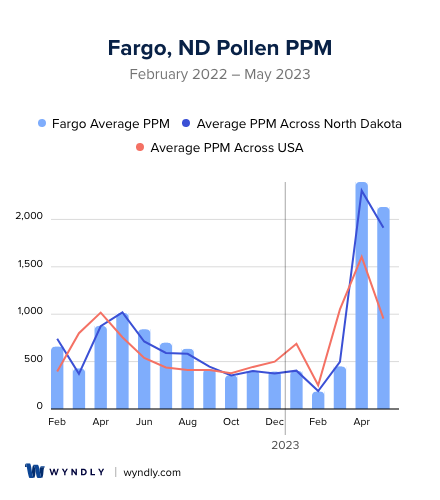
Fargo, ND Pollen and Allergy Breakdown by Month
Grass
When is grass pollen highest in Fargo, ND?
July has the highest grass pollen in Fargo, ND with an average PPM of
When is grass pollen lowest in Fargo, ND?
October has the lowest grass pollen in Fargo, ND with an average PPM of
Tree
When is tree pollen highest in Fargo, ND?
April has the highest tree pollen in Fargo, ND with an average PPM of
When is tree pollen lowest in Fargo, ND?
October has the lowest tree pollen in Fargo, ND with an average PPM of
Weed
When is weed pollen highest in Fargo, ND?
April has the highest weed pollen in Fargo, ND with an average PPM of
When is weed pollen lowest in Fargo, ND?
February has the lowest weed pollen in Fargo, ND with an average PPM of
Fargo, ND Pollen Monthly Breakdown by Pollen Type
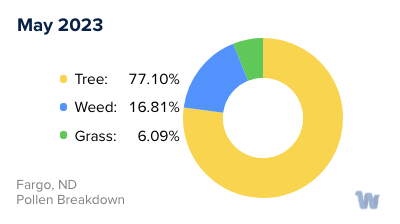
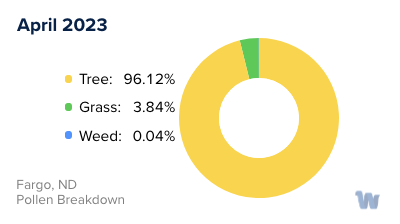
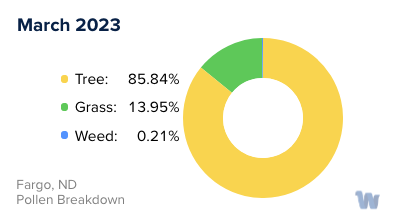
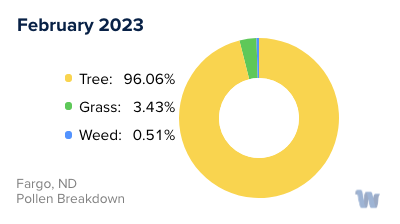
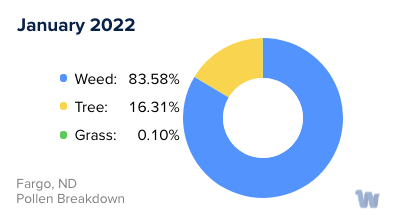
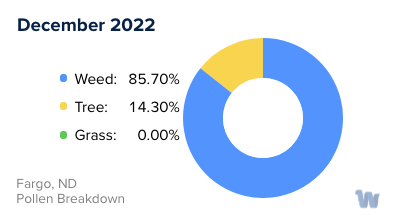
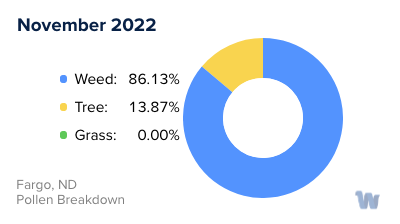

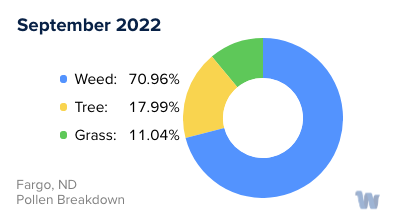
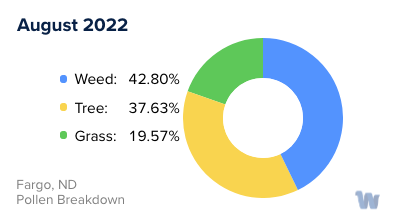
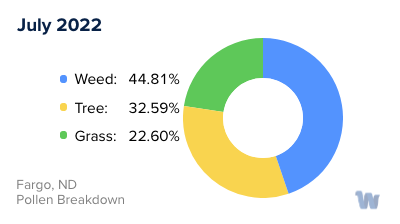
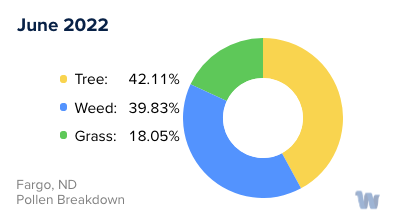
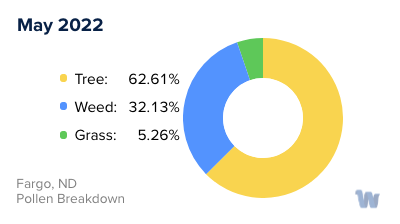
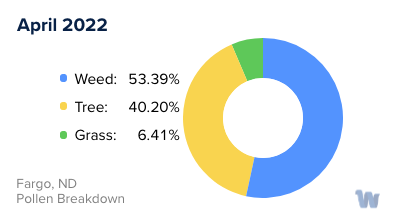
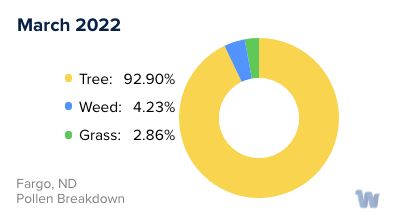
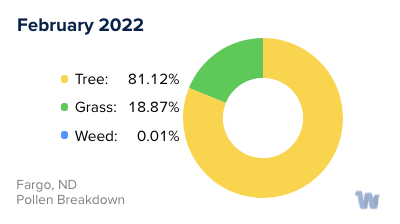
Pollen and Hay Fever in Fargo, ND
Pollen allergies, often referred to as hay fever, are a common occurrence in Fargo, North Dakota, impacting the daily routines of many residents. As the seasons change, the levels and types of pollen that fill the air fluctuate, leading to varying degrees of discomfort for those with sensitivities.
Spring in Fargo brings a bloom of vibrant color, but along with this beauty comes the first surge of pollen. Trees like oaks, maples, and birches come alive and start to release their pollen. If you're susceptible, this is often the time when you may start to notice familiar symptoms such as sneezing, itchy eyes, or a runny nose.
As spring transitions to summer, the trees quiet down, but the grasses take their turn. Grass pollen, especially from species such as Timothy grass, Kentucky bluegrass, and ryegrass, tends to peak during the warm, sunny days of June and July. This can extend the pollen season for allergy sufferers, making summer picnics and outdoor activities a bit less comfortable.
As the warm weather begins to wane and Fargo heads into the fall season, there's a shift from grass to weed pollen. Ragweed, in particular, is the main offender during this time. Starting in late August and continuing through September, ragweed releases its pollen, often carried by the wind, leading to another spike in allergy symptoms.
The changing seasons in Fargo present a revolving roster of pollens, each bringing its unique challenges. Understanding the types of pollen prevalent in each season can help those affected to better anticipate and manage their symptoms. It's worth noting that individual reactions to different pollens can vary, and what might be a high pollen season for one person might not be for another.
While the challenges of pollen allergies in Fargo are a fact of life, knowledge of the local pollen calendar offers a sense of control, allowing residents to embrace the changing seasons with awareness and preparedness.

